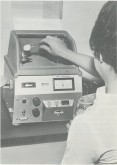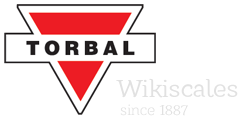Top loading TORBAL® Torsion Balance improves quality control operation

Key Features
• Time required for moisture analysis has been
reduced 30 to 40 percent.
• Four of the nine technicians formerly required
for weight checks have been reassigned to other
activities.
For moisture content checks in the processing of dehydrated onion and garlic, Gilroy Foods, Inc.,was fully utilizing two optical-projection knife-edge balances. Dust necessitated frequent maintenance, and vibration diminished balance readability by causing the projected image to blur.
After an extensive investigation and trial, oneTORBAL® torsion balance was selected to replace the two knife-edge balances. The result, based on more than two years of experience with the TORBAL® balance, is faster quality control weighings with savings in manpower and in cost of balance maintenance. The basic problem was that during the high-volume processing season, making 500 moisture-content weighings a day with the knife-edge balances was proving to be difficult and time consuming. Nine technicians were trained to perform these moisture content analyses during the 7-day-week, around the-clock processing season. This kept their two optical-projection-knife-edge balances in continual use during this period for a total of some 20,000 analyses annually.
Their experience revealed excessive balance maintenance because dust accumulations created friction at the knife edges, reducing sensitivity and accuracy. In addition, sample weighing was tedious. Each knife-edge balance had to be arrested every time a sample was placed on or removed from the pan. Vibration from machinery on the production floor also caused the projected image on the balances to blur, limiting readability and dulling knife edges.
A careful evaluation of other weighing instruments led Gilroy Foods to try the torsion-principle balance one that uses taut torsion bands instead of knife-edge fulcra. The model selected was the TORBAL® ET-1 top loading balance with electronic null indicator and digital readout to 1 mg.
The results documented by over two years of operating experience include a 30 to 40 percent reduction in the time required to do the moisture analysis with one balance replacing the two balances used before. This produced a dramatic saving in manpower since it was possible to reassign four of the nine original technicians needed to other activities. In effect this proves the torsion balance is easier to operate and to read. Finally, vibration and dust have had no noticeable effect on balance operation.
The basic advantages of this torsion-principle balance may be thanked for these results. There is no arrestment with a torsion balance because it has no knife edges or friction pivots. This type of construction is inherently rugged and less sensitive to dust; hence, accuracy is retained for a considerable length of time before maintenance is called for.
In addition, null type instruments, by definition and design are not dependent on a constant sensitivity for accuracy as are optical projection instruments. Null indicators on null type instruments are always returned to a zero position. In a null-type balance changes in sensitivity do not affect the accuracy as long as the instrument is sensitive enough to detect the smallest weight increment.
Accurate weight determination with optical projection balances depends upon the balance beam always deflecting the same amount and the correct amount for given valves of weight. However, the degree of beam deflection varies with any changes in the condition of the knife edges or bearings. Such changes can be caused by rough handling of the balance or wear from dirt or other foreign material. The sensitivity of a null type balance is quickly checked by changing the weight value one unit and seeing if a change in the position of the indicator needle can be detected. Optical projection balances depend upon a constant and correct sensitivity for accurate weight determination.
Published in 1959
